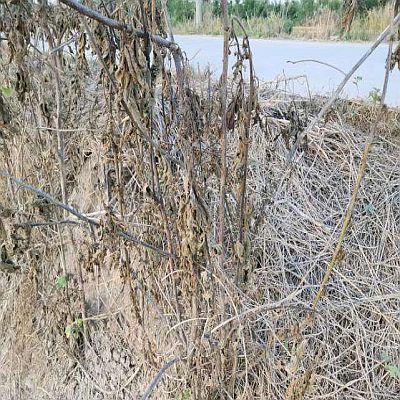Prometryn is a selective internal absorption and conduction herbicide
Prometryn is a selective internal absorption conductive herbicide, which can be transmitted from roots or stems and leaves to green leaves. During plant photosynthesis, prometryne plays a pharmaceutical effect by affecting the respiration of mitochondria. It has a significant control effect on various weeds in peanut field, such as maltang, beef tendon grass, purslane and so on. Prometryn is a selective internal absorption and conduction herbicide. Prometryn has low water solubility. After application, it can be adsorbed by soil clay in 0-5cm topsoil to form a drug layer, so that weeds can contact the agent when they sprout out of the soil. Prometryn is one of the triazine herbicides. It replaces the third chlorine atom with thiomethyl on the triazine ring, which not only retains the advantages of triazine herbicide, such as wide herbicidal spectrum and long efficacy, but also overcomes the drug damage to crops and increases the application range. In addition to corn and sorghum, prometrazine can also be used in wheat, rice, cotton, soybean, peanut, potato, sugarcane Vegetables and fruits, etc. Prometryn is a selective herbicide, which can be absorbed and spread through roots and leaves. It has good control effect on newly germinated weeds. It has a wide range of herbicides and can prevent annual weeds and broad-leaved weeds. It is a wettable powder, which is difficult to dissolve in water and easy to dissolve in organic solvents. It is suitable for cotton, soybean, wheat, peanut, sunflower, potato, fruit tree, vegetable, tea tree and rice field to control weeds, horse Tang, ginseng, wild leek, medlar, medlar, purslane, girl, turmeric, 1-year-old grass and broad-leaved plantain.
Action mechanism of prometryn herbicide:
1.Inhibition of photosynthesis: Green plants usually rely on light cooperation to obtain nutrients. Prometryn herbicide can block the transmission of electrons from QA to QB; It can also act on the photosynthetic phosphorylation site, inhibit the photosynthetic phosphorylation reaction and hinder the formation of capacity. It can also intercept the electrons transferred to NADP and affect the reduction of NADP.
2. Destroy plant respiration: Plant respiration, like other organisms, occurs in mitochondria in cells. Prometryn herbicide usually does not affect the glycolysis and tricarboxylic acid cycle of plants, but mainly affects the oxidative phosphorylation coupling reaction, resulting in the inability to generate ATP and meet the energy needs of plant growth. Plants eventually die due to the interference of normal metabolism.
3. Inhibition of plant biosynthesis: Inhibit the biosynthesis of chlorophyll and the destruction of plasma membrane, and inhibit the biosynthesis of carotenoids; Inhibit the synthesis of amino acids, nucleic acids and proteins; Inhibit the synthesis of lipids.
4. Interfere with the balance of plant hormones: After some stable compounds enter the plant, they will break the balance of natural plant hormones, which will seriously affect the growth and development of plants. Hormonal herbicides can stimulate plants at low concentration and inhibit plants at high concentration. Due to the difference of drug sensitivity and drug accumulation in different plant organs, the injured plants often see the symptoms of stimulation and inhibition at the same time.
5. Inhibition of microtubule and tissue development: Microtubules are filamentous pressure cell structures that exist in all eukaryotic cells. Prometryn inhibited the continuous process of cell division; Hinder the formation of cell wall or cell plate, cause cell abnormalities, and produce binuclear and multinucleated cells.

